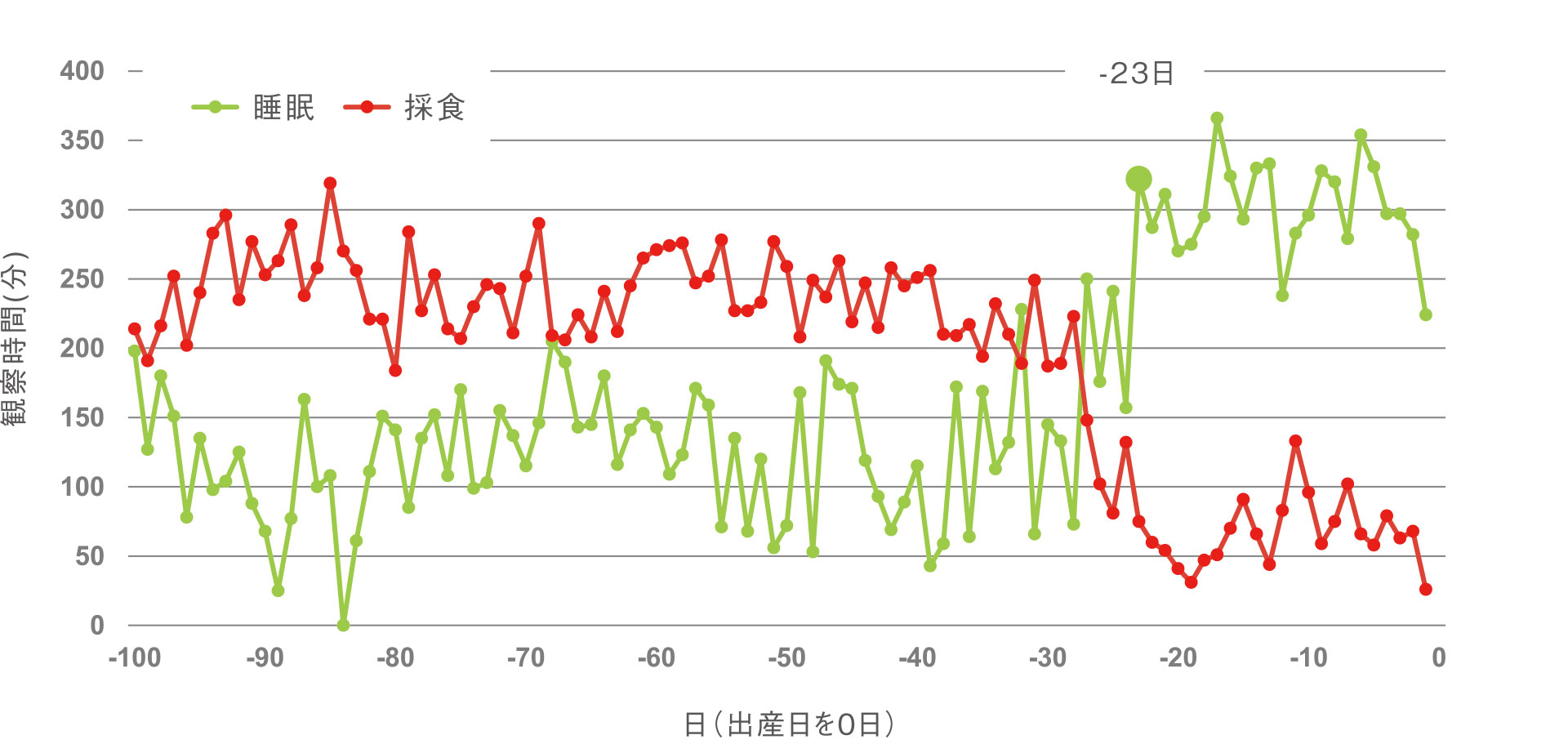

Predicting the date of birth is important for the rearing and management of parents and children in the early stages of birth.
The gestation period of giant pandas is generally 3 to 5 months. In the case of our park, the shortest gestation period was 93 days and the longest was 163 days, a range of more than 2 months, and it is also recognized that there is a large variation among individuals. This variation in gestation period is due to the panda's unique reproductive mechanism called delayed implantation*.
*Delayed implantation: A form of implantation observed in some mammals. After fertilization, the embryo floats in the uterus, and after certain conditions are met, implantation and placenta formation occur. This is observed in bears, including pandas, and marsupials.
-
Individual gestation period
Mother : Ume Ume Mother : Rahama year of birth gestation period year of birth gestation period 2000年 103日 2008年 138日 2001年 93日 2010年 136日 2003年 109日 2012年 129日 2005年 139日 2014年 136日 2006年 117日 2016年 136日 2018年 128日 2020年 163日 average 112日 average 134日 shortest 93日 shortest 128日 the longest 139日 the longest 163日 -
出産推定表
母親 year of birth Date of onset to delivery (days) 糞量減少(5kg以下) Peak urinary pregnanediol Continuous increase in sleep duration up and down 2000年 24 20 26 2001年 21 23 14 2003年 21 22 24 2005年 25 21 25 2006年 22 22 23 Mean ± standard deviation 22.6±1.8 21.6±1.1 22.4±4.8 good beach 2008年 21 20 31 2010年 23 25 31 2012年 23 27 31 2014年 27 20 29 2016年 22 21 27 2018年 22 23 27 2020年 21 17 23 Mean ± standard deviation 22.7±2.1 21.9±3.4 28.4±3.0 Ume-ume and Rahama Mean ± standard deviation 22.7±1.9 21.8±2.6 25.9±4.8
Since 2010, the survival rate of baby pandas in captivity has dramatically increased to 88%. This can be attributed to the establishment of husbandry management techniques for parents and children within the first week of life, a period when mortality rates are high. Predicting the date of birth is also important for the rearing and management of parents and children in the early stages of birth. The Park estimates the date of birth by focusing on three indicators based on past cases.
- (1) Extreme decrease in fecal volume (5 kg)
- ② 尿中プレグナンジオール(PDG)のピーク
- (iii) Continuous increase in sleeping hours
These indicators appeared in the order of "increased sleep time," "decreased fecal volume," and "peak urinary pregnanediol," with the date of appearance of "decreased fecal volume" being considered the most reliable with the least variation. At the Park, we estimate the date of delivery using the above three indicators, and finally determine that the female is just before delivery when she becomes restless, or when vulvar swelling or licking behavior is observed. The ability to predict the date of delivery allows us to prepare the mother for the birth environment and to nurture the baby.
Sleeping and eating hours (2020 Ryohama births)

Fecal and urinary pregnanediol (2020 Ryohama birth)

